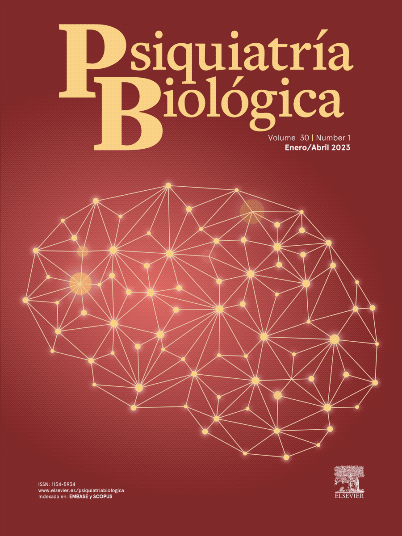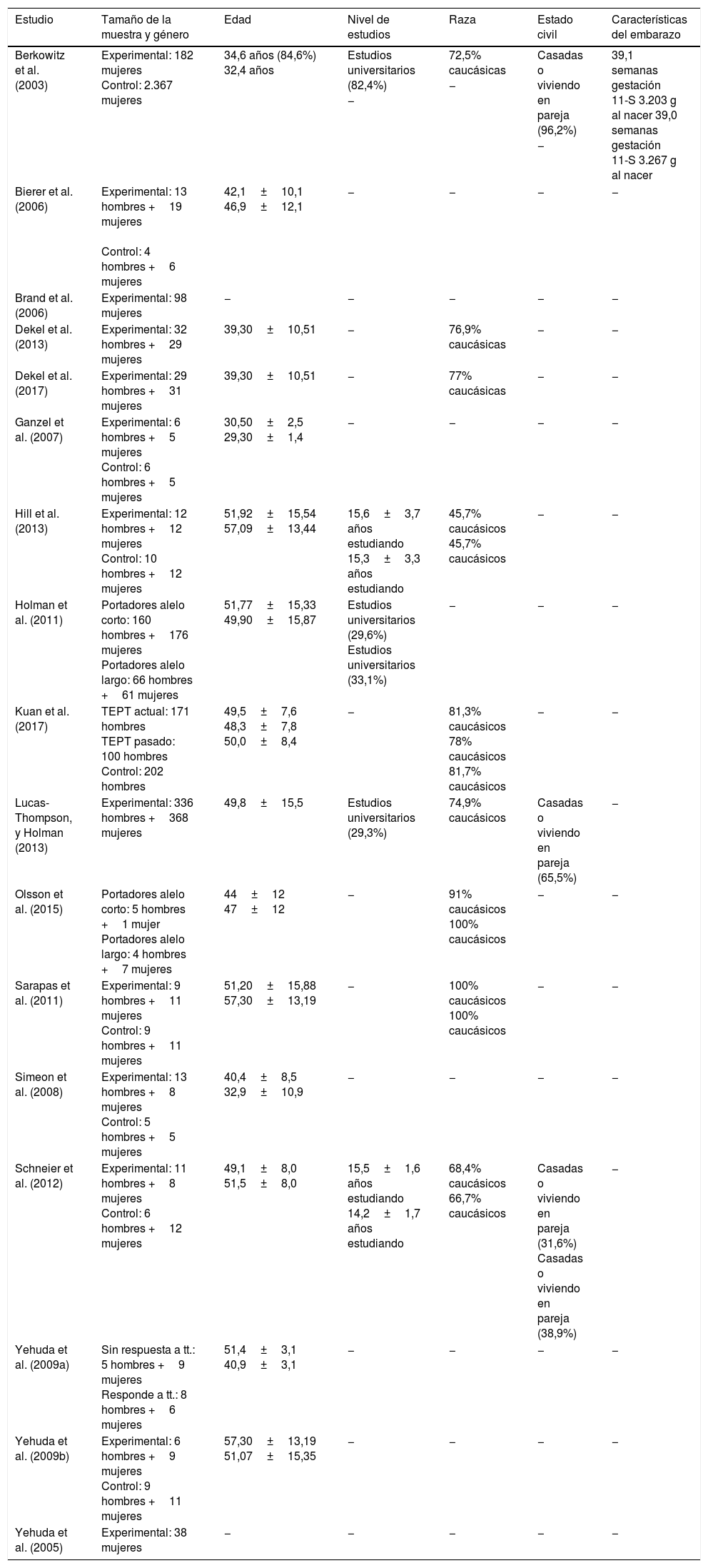De todas las personas expuestas a un evento traumático, solo un pequeño porcentaje de ellas desarrollarán un trastorno por estrés postraumático (TEPT). Las neurociencias han sugerido la existencia de cierta predisposición genética que elevaría la vulnerabilidad para desarrollar el trastorno, así como la desregulación de múltiples sistemas neuroquímicos como correlatos del trastorno. Asimismo, se ha hipotetizado sobre la posible transmisión intergeneracional del mencionado trastorno.
Material y métodoRevisar y sintetizar los resultados obtenidos sobre los factores psicobiológicos que aumentan la vulnerabilidad para desarrollar el TEPT tras el atentado terrorista de las Torres Gemelas o del 11 de septiembre de 2001 (11-S), de la misma forma que los posibles correlatos una vez que se ha desarrollado el susodicho trastorno. Se ha revisado la bibliografía científica usando los buscadores PubMed/Medline y Google Scholar.
ResultadosLas víctimas del 11-S, en particular las que desarrollaron un TEPT, presentan una serie de determinadas variantes alélicas del eje hipotálamo-hipofiso-adrenal (HHA), de los sistemas oxitocinérgico y serotoninérgico que les conferirían una mayor vulnerabilidad para desarrollar dicho trastorno. Además, a nivel neuroanatómico existirían alteraciones en los sistemas endocannabinoidal y serotoninérgico. De la misma forma, señalan la reducción de la actividad del córtex retroesplenial, de las regiones dorsales del córtex prefrontal, el precúneo, el giro caudado y parahipocampal, así como una sobreactivación bilateral de la amígdala como posibles correlatos de la sintomatología característica del TEPT. Por último, a pesar de que a nivel del eje HHA la secreción del cortisol mantenga las fluctuaciones diarias normales, las personas afectadas por el TEPT presentarían una hipocortisolemia basal, pero con una respuesta al estrés relativamente preservada.
DiscusiónTodas estas alteraciones facilitarían la transmisión intergeneracional del trastorno, ya que condicionarían el ambiente prenatal. De esta forma, la composición del líquido amniótico se vería afectada por el estrés derivado del evento traumático, así como por la exposición a contaminantes ambientales liberados durante el atentado. Por lo tanto, la extensión de los atentados terroristas abarcaría más allá de las propias personas afectadas, extendiéndose incluso a su descendencia. La comprensión de los mecanismos etiológicos que subyacen al TEPT podrían favorecer la aparición de nuevas estrategias de intervención.
Of all the individuals exposed to a traumatic event, only as small percentage of them develop a post-traumatic stress disorder (PTSD). Neurosciences have suggested that there is a certain genetic predisposition that would increase the vulnerability to develop the disorder, as well as the deregulation of several neurochemical systems as correlates of the disorder. Furthermore, a hypothesis has been put forward of the possible inter-generational transmission of the aforementioned disorder.
Material and methodTo review and summarise the results obtained in relation to the psycho-biological factors that increase the vulnerability to develop PTSD after the aftermath of the 9/11 attacks on the Twin Towers, as well as the potential correlates with such disorders. The scientific literature was reviewed using searches in PubMed/Medline and Google Scholar.
Results9/11 victims, in particular those that developed a PTSD, an specific number of allelic variants of the hypothalamic-pituitary-adrenal (HPA) axis, the oxytocinergic and serotoninergic systems that may confer a greater vulnerability to develop this disorder. Furthermore, at a neuro-anatomical level there could be modifications in the endocannabinoid and serotoninergic systems. Likewise, way they signal the reduction in the activity of the retrosplenial cortex, the dorsal regions of the prefrontal cortex, the precuneus, the caudal and parahippocampal gyrus, as well as the bilateral over-activation of the amygdala, as possible correlates of the characteristic symptoms of PTSD. Lastly, despite the fact that normal daily fluctuations at HPA axis level are sustained by the secretion of cortisol, individuals affected by PTSD may have a low baseline plasma cortisol, but with a relatively conserved stress response.
DiscussionAll of these changes could facilitate the inter-generational transmission of the disorder, since they would be determining factors in the prenatal environment. In this way, the composition of the amniotic fluid would be affected by the stress arising from the traumatic event, as well as to the exposure to the environmental contaminants released during the terrorist attack. Therefore, the extent of the terrorist attacks should not only consider those individually affected by it, but also to their descendants. The understanding of the aetiological underlying mechanisms of PTSD could lead the way into the development of new intervention strategies.
Artículo
Comprando el artículo el PDF del mismo podrá ser descargado
Precio 19,34 €
Comprar ahora








